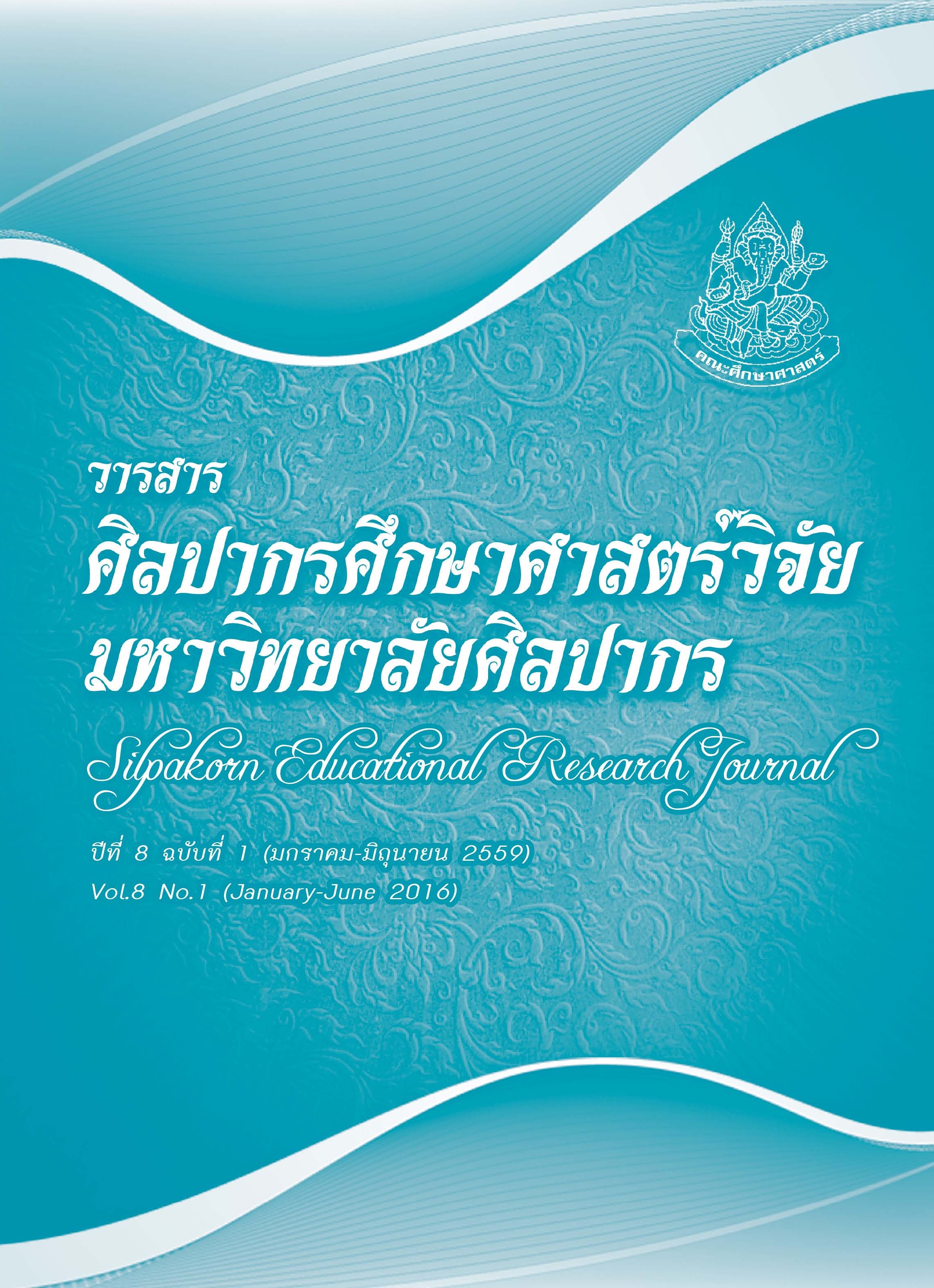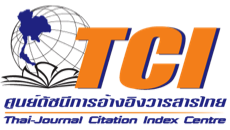การพัฒนารูปแบบการสอนเพื่อส่งเสริมทักษะการคิดเชิงระบบ ของนักศึกษาสาธารณสุขศาสตร์ (The Development of Instructional Model to Enhance Systematic Thinking Skills of Public Health Students)
คำสำคัญ:
รูปแบบการสอน, การคิดเชิงระบบ, The Instructional Model, Systematic Thinking Skillบทคัดย่อ
บทคัดย่อ
การพัฒนารูปแบบการสอนเพื่อส่งเสริมทักษะการคิดเชิงระบบ มีวัตถุประสงค์ 1) เพื่อพัฒนาและหาประสิทธิภาพของรูปแบบการสอน 2) เพื่อประเมินประสิทธิผลการใช้รูปแบบการสอน และ 3) เพื่อขยายผลรูปแบบการสอน กลุ่มตัวอย่างที่ใช้ในการวิจัยคือ นักศึกษาสาธารณสุขศาสตร์ ชั้นปีที่ 2 ภาคเรียนที่ 2 ปีการศึกษา 2555 ของวิทยาลัยการสาธารณสุขสิรินธร จังหวัดสุพรรณบุรี จำนวน 48 คน เครื่องมือที่ใช้ได้แก่ รูปแบบการสอนเพื่อส่งเสริมทักษะการคิดเชิงระบบ คู่มือการใช้รูปแบบการสอน แผนการสอน แบบประเมินทักษะการคิดเชิงระบบ แบบประเมินวินัยในตนเอง และแบบประเมินคุณลักษณะจิตสาธารณะ ผลการวิจัยพบว่า 1) รูปแบบการสอนที่พัฒนาขึ้นคือ “FIEDCDR Model” มี 8 องค์ประกอบได้แก่ หลักการและเหตุผล วัตถุประสงค์ กระบวนการจัดการเรียนรู้ ประกอบด้วย 7 ขั้นตอนได้แก่ ขั้นเผชิญปัญหา ขั้นค้นหาข้อมูล ขั้นเพิ่มพูนปัญญา ขั้นพัฒนาความคิด ขั้นสรรสร้างแผนแก้ปัญหาและพิจารณาความเป็นไปได้ ขั้นอภิปรายสรุปร่วมกัน และขั้นสะท้อนความคิด การวัดและประเมินผล บทบาทของผู้สอน บทบาทของผู้เรียน สิ่งสนับสนุนการเรียนรู้และเงื่อนไขปัจจัยสู่ความสำเร็จในการนำรูปแบบไปใช้ ผลการหาประสิทธิภาพรูปแบบการสอนจากผู้เชี่ยวชาญพบว่ามีประสิทธิภาพ 2) นักศึกษามีทักษะการคิดเชิงระบบ วินัยในตนเอง และคุณลักษณะจิตสาธารณะหลังการทดลองสูงกว่าก่อนการทดลองอย่างมีนัยสำคัญทางสถิติที่ระดับ .05 3) ผลการขยายผลรูปแบบการสอนพบว่าภายหลังเรียน นักศึกษามีทักษะการคิดเชิงระบบ วินัยในตนเอง และคุณลักษณะจิตสาธารณะหลังการทดลองสูงกว่าก่อนเรียนอย่างมีนัยสำคัญทางสถิติที่ระดับ .05
Abstract
The purposes of this research were to: 1) develop and determine the efficiency of instructional model to enhance systematic thinking of public health students, 2) evaluate the effectiveness of instructional model, and 3) disseminate the instructional model. The samples comprised of fourty eight of second year students during the second semester of the academic year 2012 at Sirindhorn college of Public Health Suphanburi. Research instruments consisted of instructional model, handbook for the model, lesson plans, systematic thinking skill assessment form, self-discipline assessment form and public mind attribute assessment form. The developed instructional model had efficiency. The instructional model to enhance systematic thinking of public health students called “FIEDCDR” consisted of eight elements. There were 1) principles 2) objectives 3) the learning process which had seven steps, namely (1) Facing the Problems: F, (2) Data inquiry: I, (3) Enhancing Knowledge: E, (4) Developing Thinking: D, (5) Creating Problem Solving Plan and Describing the Probability: C, (6) Discussing and Concluding: D, and (7) Reflecting Thinking: R; 4) The assessments and evaluations 5) teacher roles 6) students role 7) learning support and 8) the important conditions for using the FIEDCDR Model successfully The effectiveness of FIEDCDR Model indicated that the students had systematic thinking skill, self-discipline and public mind attribute after implementing the FIEDCDR Model were higher than before implementing the instructional model at .05 significance level. The results of the dissemination indicated that the systematic thinking skill, self-discipline and public mind attribute of public health students after implementing the FIEDCDR Model were higher than before implementing the instructional model at .05 significance level.





